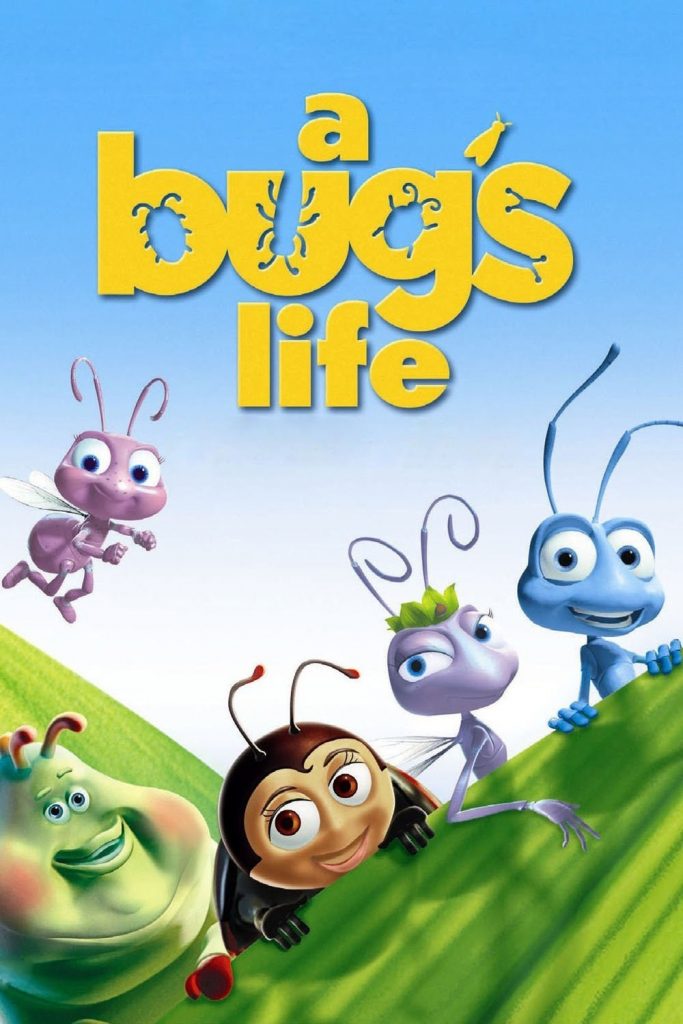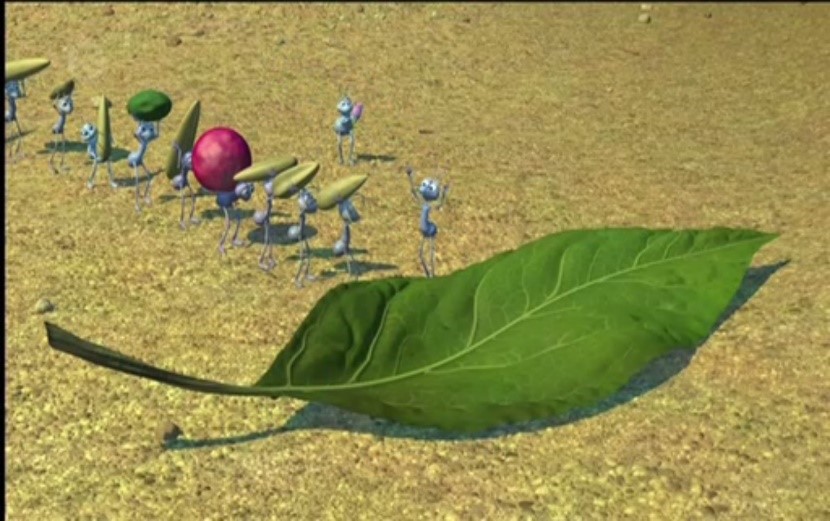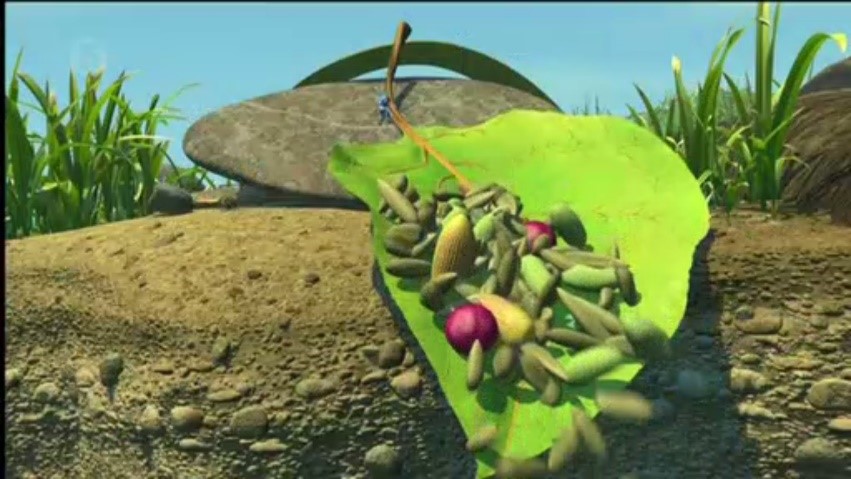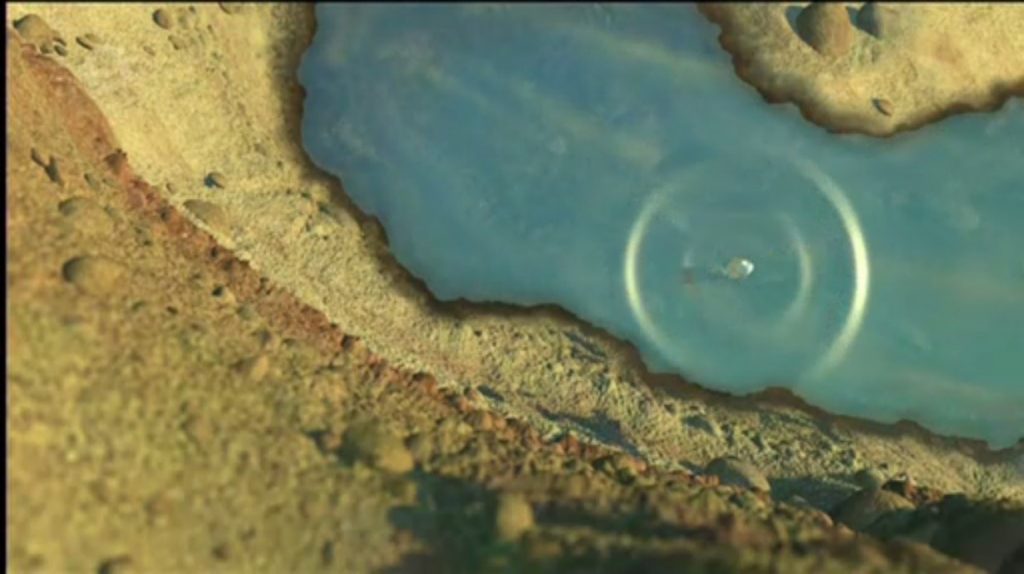The notion of capitalism is undeniably present in A Bug’s Life [1] and is a vehicle that allows the ants and grasshoppers to be considered anthropomorphic beings. Hence the parallel to the class system that exists in human society: ants being the underclass and grasshoppers being the bourgeoisie, exploiting the ants for theirlabour. Thus, A Bug’s Life can be considered a microcosm of human society.
“You are mindless soil shovelling losers put on this earth to serve us,” dictates grasshopper suppressor Hopper to the large colony of ants, demonstrating his oppressing role as chief grasshopper. The opening scene puts Hopper’s words into practice where the ant colony walk in a single line of production, delivering handpicked food to the ‘offering leaf’ under exploitative orders from Hopper. One image depicts a high angle shot hovering over the miniscule ants demonstrating the ants’ insignificance beyond their labour, devoid of agency and emotions. However, when a leaf naturally falls disrupting the militant rhythm of production, the ants panic and are confronted with issue of ‘getting around’ the leaf. Here the camera angle quickly breaks from an ‘eye in the sky’ high angle shot to a close-up of the ants. The close-up angle concedes a short break from the capitalist top-down vision allowing the ants to pierce the screen with their vibrant purple bodies. The simultaneity between the close up and the leaf blocking the production line equates to a moment of revolution where the ants begin to stand out and emit emotion, foreshadowing the ants resistance to working for the grasshoppers. This zoomed in lens derails the ants militant thought process and urges to follow suit, reimagining them as more complicated and emotional agents beyond the limits of pure industrial value.

The leaf ultimately symbolises a natural opportunity to ‘debunk’ the current oppressive power, where “ants collect the food, eat the food and the grasshoppers leave”, and calls for a reform of nature’s order. Tensions intensify further when Flik mindlessly discards his grain-harvesting device knocking the food into the stream, causing literal waves in the water as well as in the ant colony. Flik’s subconscious act of defiance coupled with his invention and ability to think separately from the other mechanically coded ants allows him to start a revolt against oppression. If he had not invented the machine, the necessary disruption of the ‘falling’ of the food would not have occurred allowing the grasshoppers to continue exploiting the ants. However, Flik’s individual revolt against the grasshoppers does not necessarily equate to a critique on capitalism as a unique individual is not needed for the undermining of capitalism rather the whole proletariat. Still, Flik attempts to fight the cause in the final scene when he verbally rejects the notion that ants are “soil shovelling slaves”, “they aren’t meant to serve grasshoppers, it’s [them who need the ants]”
Anthropomorphism in animation is often a useful tool to help humans reflect on themselves within film as they can distance themselves from society and instead see human emotions and situations play out. A Bug’s Life to some extent acknowledges the depth of structural inequality woven into the fabric of human society as it has even trickled down into non-human (ant) society. However, the use of animation can be seen as paradoxical to a critique of capitalism as the child friendly nature of the visual aspects of the film could be seen as a device to hold the child’s attention making more time for the adult to work. In this sense, A Bug’s Life seems to be promoting anti-Fordist capitalism which is problematic as the film has paradoxically both demonstrated the encouragement and critique of capitalism.
[1] A Bug’s Life, dir. by Dave Foley (Walt Disney Pictures, 1999).


